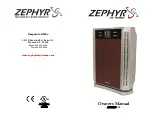
14
Precautions for refrigerant piping
Do not twist or crush piping.
Be sure that no dust is mixed in piping.
Bend piping with as wide angle as possible.
Keep insulating both gas and liquid piping.
Check flare-connected area for gas leakage
7.4. Piping connection method
Apply refrigerant oil to the joint and the flange
To bend a pipe, give the roundness as possible not to
crush the pipe.
When connecting pipe, hold the pipe centre to centre
and then screw nut on by hand, refer to Fig.
Be careful not to let foreign matters, such as sands
enter the pipe
Spanner
Spanner
Joint
Nut
Pipe diameter
Fastening torque (N.m)
Liquid pipe Φ 6.35mm
14.2-17.2
Liquid pipe Φ 9.52mm
32.7-39.9
Gas pipe Φ 12.7mm
49.5-60.3
Gas pipe Φ 15.88mm
61.8-75.4
Gas pipe Φ 19.05mm
97.2-118.6
Field pipes can be installed in four directions (A, B, C, D, E).
A: Forward
B: Sideways
C: Backward
D: Downward
E: Power supply cable outdoor and indoor connection cable
Cutting out the two slits makes it possible to install as
shown in the figure "Field pipes in 4 directions". (Use
a metal saw to cut out the slits.)
To install the connecting pipe to the unit in a
downward direction, make a knock-out hole by
penetrating the centre area around the knock-out
hole using a Ø6 mm drill (4x).
After knocking out the knock-out hole, it is
recommended to apply repair paint to the edge and
the surrounding end surfaces to prevent rusting.
When passing electrical wiring through the knock-out
holes, remove any burrs from the know-out holes and
wrap the wiring with protective tape to prevent damage.
7.5. Preventing foreign objects from entering
Plug the pipe through-holes with putty or insulating
material (procured locally) to stop up all gaps, as shown
in the figure
1 Putty or insulating material (produced locally)
If there is any possibility that small animals enter the
system through the knock-out holes, plug the holes with
packing materials (field supplied)
Insects or samall animals entering the outdoor unit may
cause a short circuit in teh electrical box.
Seal knock-out holes to avoid snow and humidity entering.
7.6. Preventing foreign objects from entering
Be careful not to let the indoor and outdoor piping
come into contact with the compressor terminal cover.
If the liquid-side piping insulation might come into
contact with it, adjust the height as shown in the
figure belo . Also, make sure the field piping does
not touch the bolts or outer panels of the compressor.
When the outdoor unit is installed above the indoor
unit the following can occur:
The condensed water on the stop valve can move to
the indoor unit. To avoid this, please cover the stop
valve with sealing material.
















































